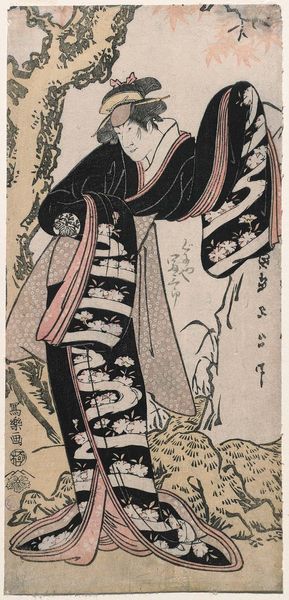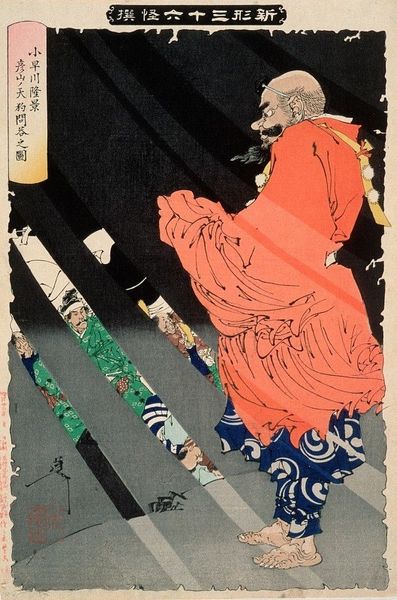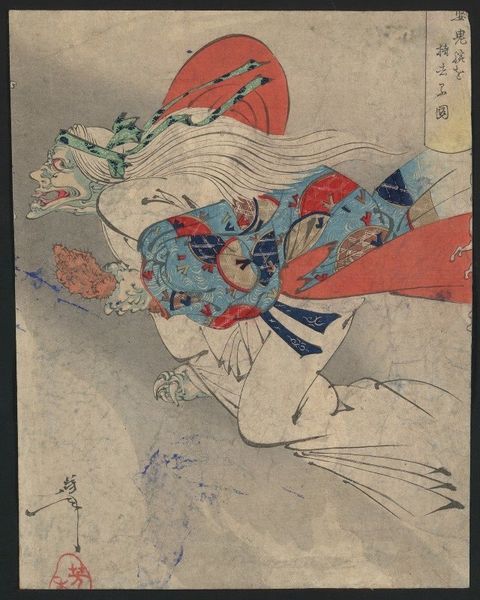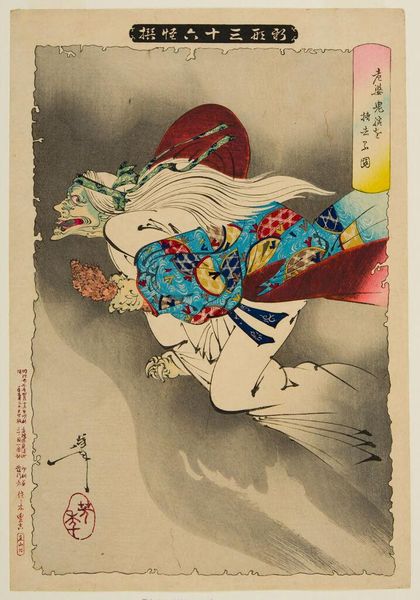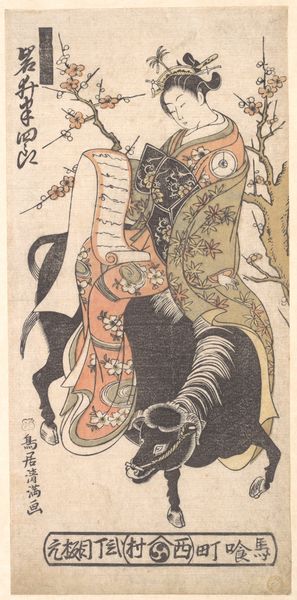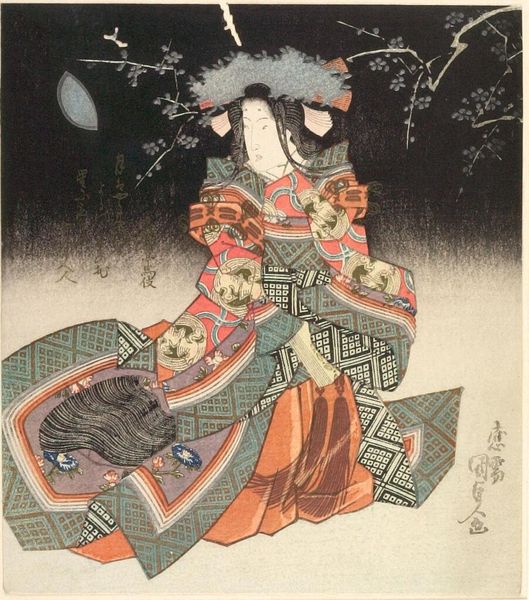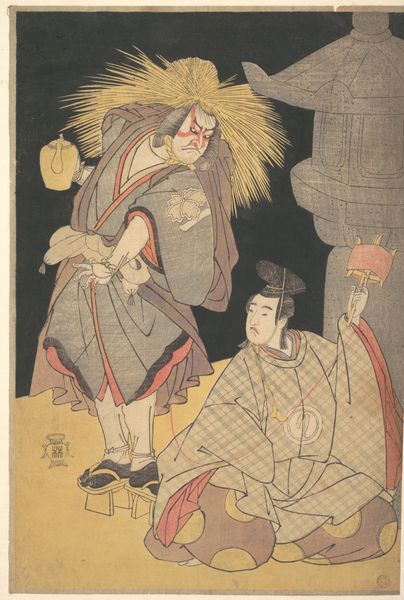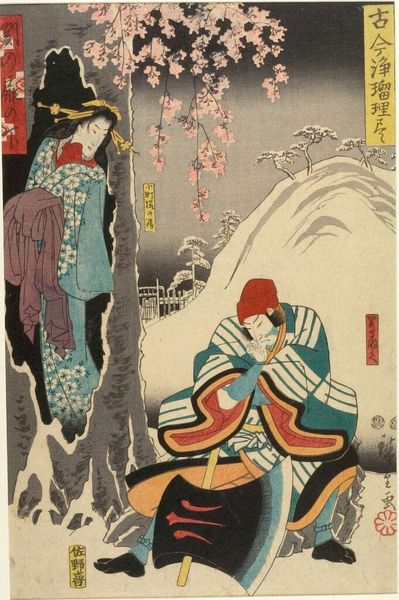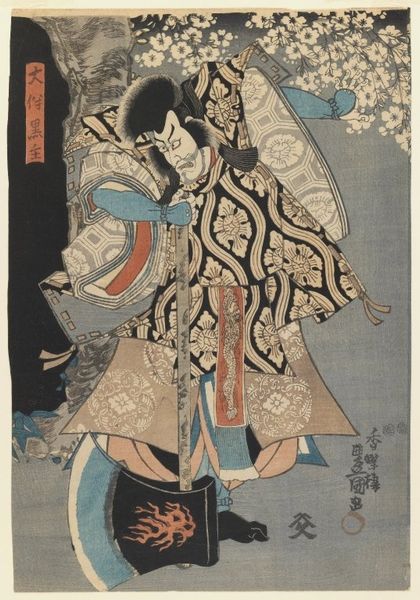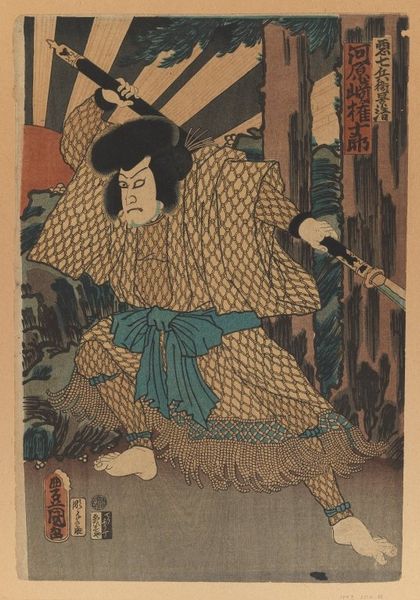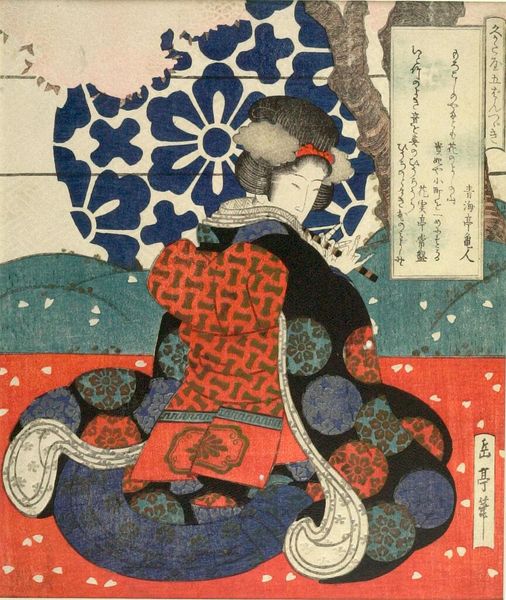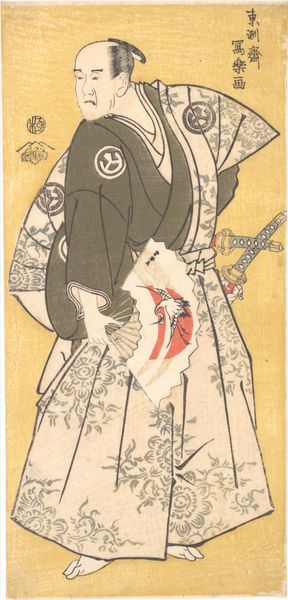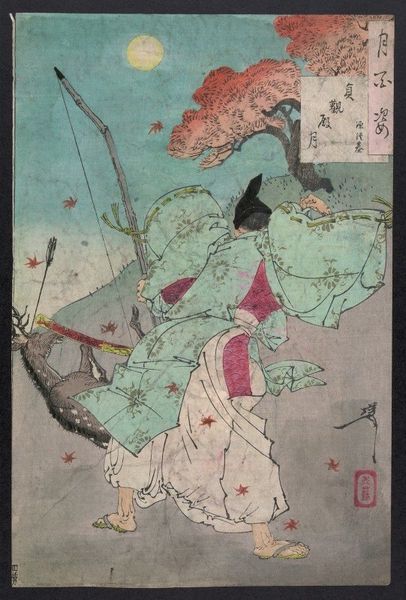
Copyright: Public Domain: Artvee
Curator: What strikes me immediately is the tension between beauty and the grotesque, it really encapsulates an uncanny space. Editor: Indeed. We’re looking at “Manosan yowa no tsuki,” a woodblock print created around 1880 by Tsukioka Yoshitoshi. It reflects the artist's interest in ukiyo-e themes and the narrative arts of the time, and this print exemplifies those styles and subjects quite compellingly. Curator: It’s unsettling in the best way. The ethereal, pale figure, set against what appears to be an eclipse, almost contrasts sharply with the...demon accompanying her, especially its very stern, assertive expression. How does this fit into the visual language and social commentary of the period? Editor: Yoshitoshi was working during a period of significant social and cultural transition in Japan, the Meiji Restoration. He drew heavily from both traditional Japanese folklore and a growing fascination with the West, often blending these elements in his work. So, it wouldn’t be so surprising that this type of piece depicts themes relating to folklore, especially since it's prevalent in art creation to act as a form of political commentary. This print engages with themes of beauty, death, and perhaps, resistance to change. The woman could embody a spirit from Japanese folklore encountering a malevolent force in its folklore traditions. Curator: Right, and given the historical context, one could interpret the figure of the demon with wings and its imposing presence not merely as a scary figure. Perhaps he stands as a metaphor for Western encroachment, wielding the inscription as a decree. The woman, conversely, may be symbolic of traditional Japanese values standing firm, in silent contemplation. It makes one consider broader issues of gender, power and how culture interacts, isn't it? Editor: Absolutely. Prints like this provided a way for artists like Yoshitoshi to engage in subtle political dialogues. The female figure and the spirit entity aren't in direct conflict. The woodblock print leaves much open to interpretation, prompting conversation among different ideologies and traditions of thought. What is left for interpretation can therefore serve as a conduit through which different political commentaries might be conceived of in relation to those represented parties. Curator: The skill in depicting such complex narratives with such nuance in a medium like woodblock print is masterful, making it particularly accessible and, frankly, powerful for discourse around this print to take place. Editor: Agreed. Looking at how this print invites a dialogue, where we find threads that weave together personal, social, and historical perspectives to achieve these discourses.
Comments
No comments
Be the first to comment and join the conversation on the ultimate creative platform.
